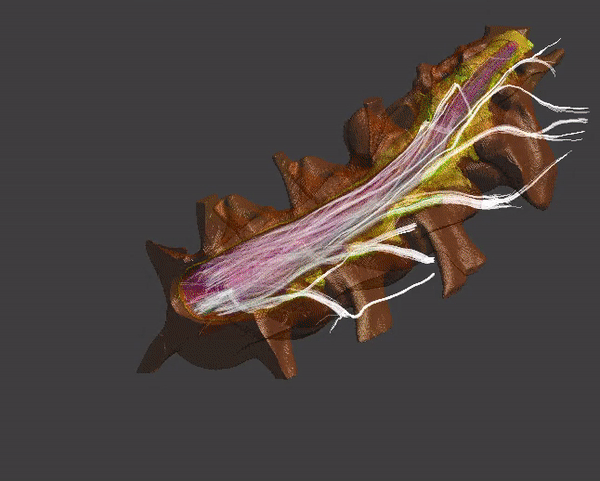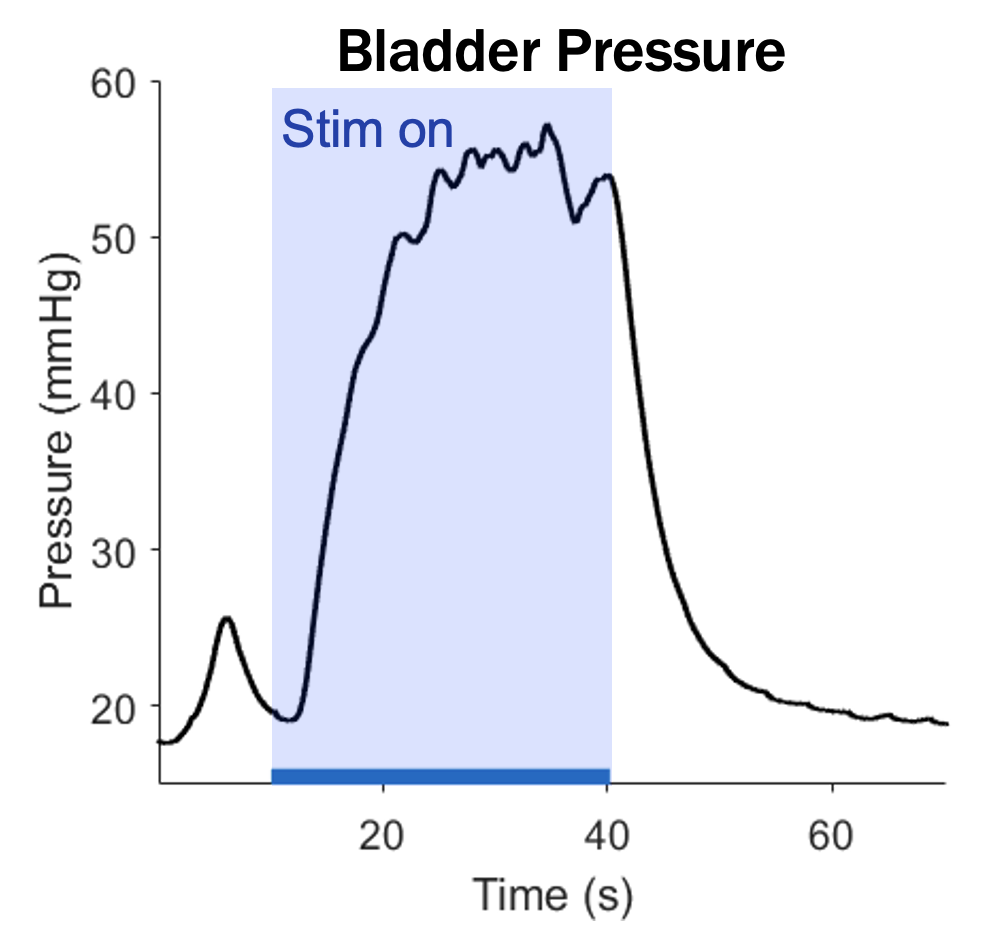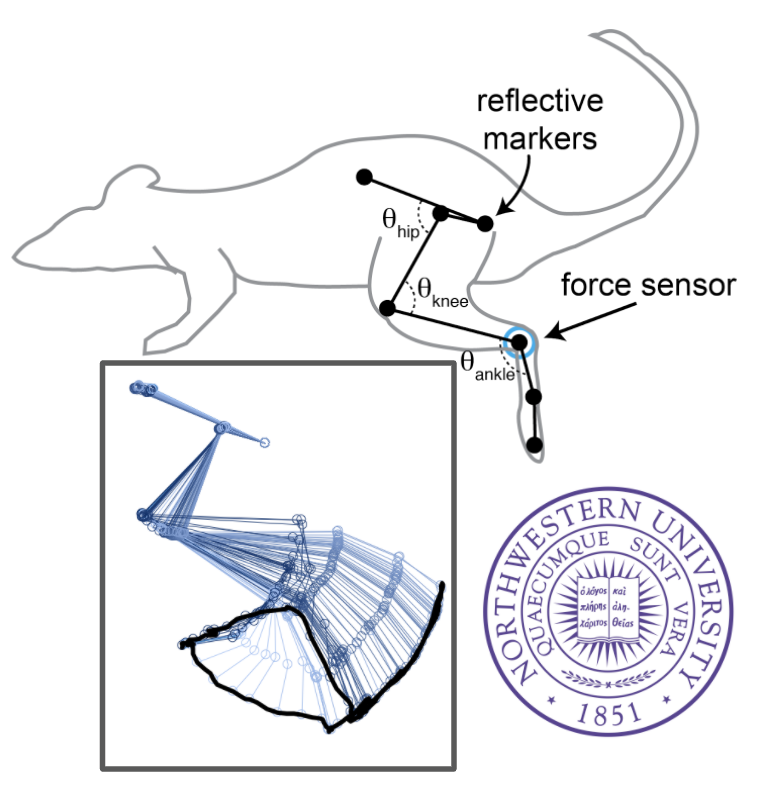Neurostimulation and rehab
My PhD work focused on restoring lower urinary tract function. About 1 in 5 people will experience impaired bladder function, but despite this widespread impact it is often overlooked. Poor bladder function can come from many neurological conditions, including spinal cord injury, Parkinson's Disease, and more. Below, I highlight several specific projects I have worked on in my PhD lab and previously. I recently began a postdoctoral position at Duke University where I study the use of high-frequency nerve stimulation for nerve block; watch this space for future updates on that research. For a complete set of publications, please see my Google Scholar page or check out my CV here. I am happy to send a copy of any papers on request.

Computational models of sacral spinal cord stimulation
I built a fully-functional model of the sacral spinal cord to simulate the neural tissue activated by epidural spinal cord stimulation. We simulated the neural recruitment evoked by stimulation as well as the bladder reflexes evoked by that neural activity. In the model, we can simulate a large parameter space that is impossible to fully explore in vivo, as well as determine the characteristics of typical neural recruitment during simulation.

Recruiting lower urinary tract nerves and function
Current methods to address lower urinary tract dysfunction fall short of restoring bladder control, and we investigated spinal cord stimulation as a way to recruit nerves of the lower urinary tract and to evoke function. Using stimulation on the epidural spinal cord or in the dorsal root ganglia, we were able to produce activity in the nerves and muscles of the lower urinary tract as well as cause both continence and voiding function.

Restoring locomotion after spinal cord injury
I recorded hindlimb muscle activity from walking rats and used that activity to create amplitude profiles and apply functional electric stimulation, aiming to produce locomotor movements that could be adapted to larger and smaller steps than stereotypic locomotor movements. As a part of this project, I used motion tracking through the Vicon system to determine typical rat locomotion and compare it to locomotion generated by our stimulation. Additionally, I implanted cortical arrays and helped record neural activity during locomotion under different conditions. This work was presented at the International Society of Electrophysiology and Kinesiology 2016 and Society for Neuroscience 2017, and the cortical decoding is presented in the linked paper below.
